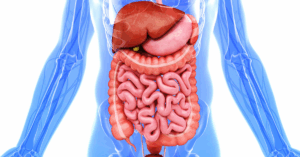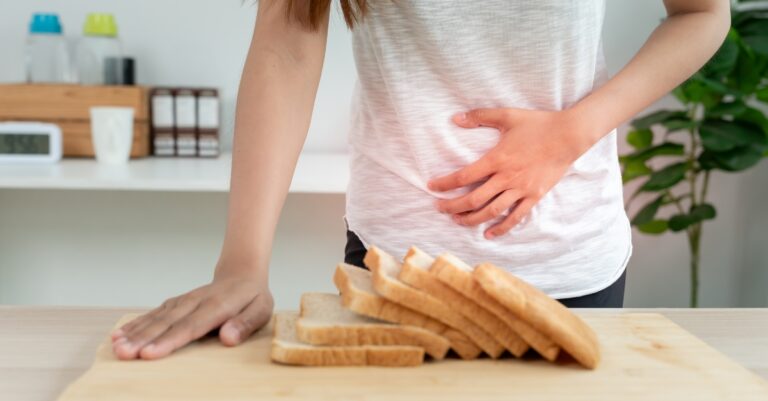Digestion is a complex, highly coordinated process that breaks food down into nutrients the body can use for energy, growth, and repair. By understanding the journey from ingestion to elimination, we can better appreciate how to optimize digestive health—an essential foundation for overall well-being. It’s not only about the foods we eat but also how effectively our bodies process and absorb them.
This article will walk you through each stage of digestion, highlighting the organs involved, how energy is extracted, how waste is expelled, and the benefits of maintaining a healthy digestive system.
The Mouth: Where Digestion Begins

Digestion starts in the mouth with both mechanical and chemical processes. Chewing (mastication) breaks food into smaller pieces, creating more surface area for enzymes to act upon. Saliva, produced by the salivary glands, contains the enzyme amylase, which begins breaking down carbohydrates. The mixture of food and saliva, called a bolus, is then swallowed and moved into the esophagus.
The Esophagus: The Passageway
The esophagus is a muscular tube connecting the throat (pharynx) to the stomach. Through wave-like contractions called peristalsis, the bolus is pushed downward. At the end of the esophagus, the lower esophageal sphincter (LES) relaxes to let food enter the stomach and then closes to prevent acid reflux.
The Stomach: The Mixer
The stomach plays a key role in both mechanical and chemical digestion. Gastric juices (mainly hydrochloric acid {HCl} and the enzyme pepsin) help break down proteins while killing harmful bacteria. The stomach lining is protected by a thick layer of mucus. Muscular contractions churn food and gastric juices together, forming a semi-liquid substance known as chyme. Depending on the complexity of the meal, this process can take several hours.
The Small Intestine: The Absorption Hub
Chyme gradually enters the small intestine, where most nutrient absorption takes place. The small intestine has three sections: the duodenum, jejunum, and ileum. In the duodenum, chyme mixes with bile from the liver and gallbladder, and enzymes from the pancreas. These secretions neutralize stomach acid and continue breaking down proteins, fats, and carbohydrates.
The inner lining of the jejunum and ileum is covered with villi and microvilli—tiny hair-like structures that increase the surface area for absorption. Nutrients such as amino acids, simple sugars, fatty acids, glycerol, vitamins, and minerals pass through the intestinal wall into the bloodstream, which delivers them throughout the body.
The Liver and Pancreas: Key Support Organs
The liver and pancreas provide essential digestive support. The liver produces bile, which emulsifies fats to aid digestion. Bile is stored in the gallbladder and released into the duodenum when needed. The pancreas produces enzymes and bicarbonate, which break down proteins, carbohydrates, and fats while neutralizing stomach acid.
The Large Intestine: Final Processing
After most nutrients are absorbed, the leftover indigestible material, water, and electrolytes move into the large intestine (colon). Here, water and electrolytes are reabsorbed, and feces are formed and stored. Beneficial bacteria in the colon also ferment undigested carbohydrates, producing short-chain fatty acids that support overall health.
The Rectum and Anus: The Exit
The last stage of digestion is waste elimination. Feces are stored in the rectum until they are expelled through the anus during defecation. This process is controlled by the internal and external anal sphincters.
How the Body Uses Energy
The nutrients absorbed during digestion fuel nearly every function of the body:
- Carbohydrates → broken down into glucose, the body’s main energy source.
- Proteins → digested into amino acids, which build and repair tissues, enzymes, and hormones.
- Fats → split into fatty acids and glycerol, providing concentrated energy and essential building blocks for cell membranes and hormone production.
Benefits of Healthy Digestion
A well-functioning digestive system supports more than just nutrient breakdown. Some of the key benefits include:
- Nutrient Absorption: Ensures the body gets the most from food, supporting energy, immunity, and vitality.
- Waste Elimination: Prevents buildup of toxins and supports hormone balance by ensuring proper elimination. Poor elimination can lead to reabsorption of estrogen, causing weight gain, mood swings, and irregular cycles.
- Gut Microbiota Balance: Promotes a healthy gut microbiome, which is linked to immunity, mental health, and protection from pathogens.
- Reduced Inflammation: Lowers the risk of chronic inflammation, which is tied to heart disease, diabetes, and autoimmune disorders.
- Weight Regulation: Helps control appetite and metabolism. Inefficient digestion can slow metabolism, leading to weight challenges.
- Mental Health Support: Through the gut-brain axis, digestion influences neurotransmitters like serotonin, which affect mood and cognition.
Tips for Supporting Digestion
- Eat a Balanced Diet: Prioritize whole, nutrient-rich foods with fiber, vitamins, and minerals. Limit processed foods with additives that disrupt gut health.
- Stay Hydrated: Aim for 2–3 liters of water daily to aid digestion and prevent constipation.
- Chew Thoroughly: Take time to chew, ideally 15–20 times per bite, to improve enzyme efficiency.
- Manage Stress: Chronic stress disrupts gut bacteria and slows digestion. Try deep breathing, meditation, or regular exercise.
- Move Daily: Activities like walking or yoga stimulate digestion and prevent constipation.
- Avoid Overeating: Eating moderate portions reduces strain on the digestive system.
- Include Probiotics & Prebiotics: Yogurt, kefir, sauerkraut, garlic, and bananas all support a healthy microbiome.
- Consider Supplements: Under professional guidance, supplements like probiotics, digestive enzymes, psyllium husk, or L-glutamine can support gut health.
Conclusion
Understanding digestion step by step shows how food is transformed into the energy and nutrients our bodies need to thrive. By supporting digestion with healthy eating, stress management, and mindful habits, we can prevent disorders, enhance well-being, and improve quality of life.
If you experience persistent digestive symptoms such as bloating, diarrhea, or fatigue, consider consulting with a naturopathic, integrative, or functional medicine practitioner for personalized guidance and support.
References
- Mayo Clinic Staff. Digestion: How long does it take? Mayo Clinic, Mayo Foundation for Medical Education and Research, 2018.
- National Institute of Diabetes and Digestive and Kidney Diseases. Your Digestive System & How It Works. U.S. Department of Health and Human Services, 2021.
- WebMD. How Your Digestive System Works. WebMD, LLC, 2021.
- Johns Hopkins Medicine. The Digestive System. The Johns Hopkins University, The Johns Hopkins Hospital, and Johns Hopkins Health System, 2020.
- Cleveland Clinic. Digestive System: Function, Organs & Anatomy. Cleveland Clinic, 2021.
- American Gastroenterological Association. Understanding the Digestive System. American Gastroenterological Association, 2019.
- Merck Manual Consumer Version. Overview of the Digestive System. Merck & Co., Inc., 2020.
- Harvard Health Publishing. The importance of a healthy gut. Harvard Medical School, 2020.
- Better Health Channel. Digestion and digestive system. State Government of Victoria, Australia, 2021.
- National Center for Biotechnology Information. Digestion, absorption, and energy metabolism. NCBI, 2020.
- Stanford Children’s Health. Digestive System. Stanford Medicine Children’s Health, 2020.
- NHS Inform. How the digestive system works. NHS Scotland, 2021.


